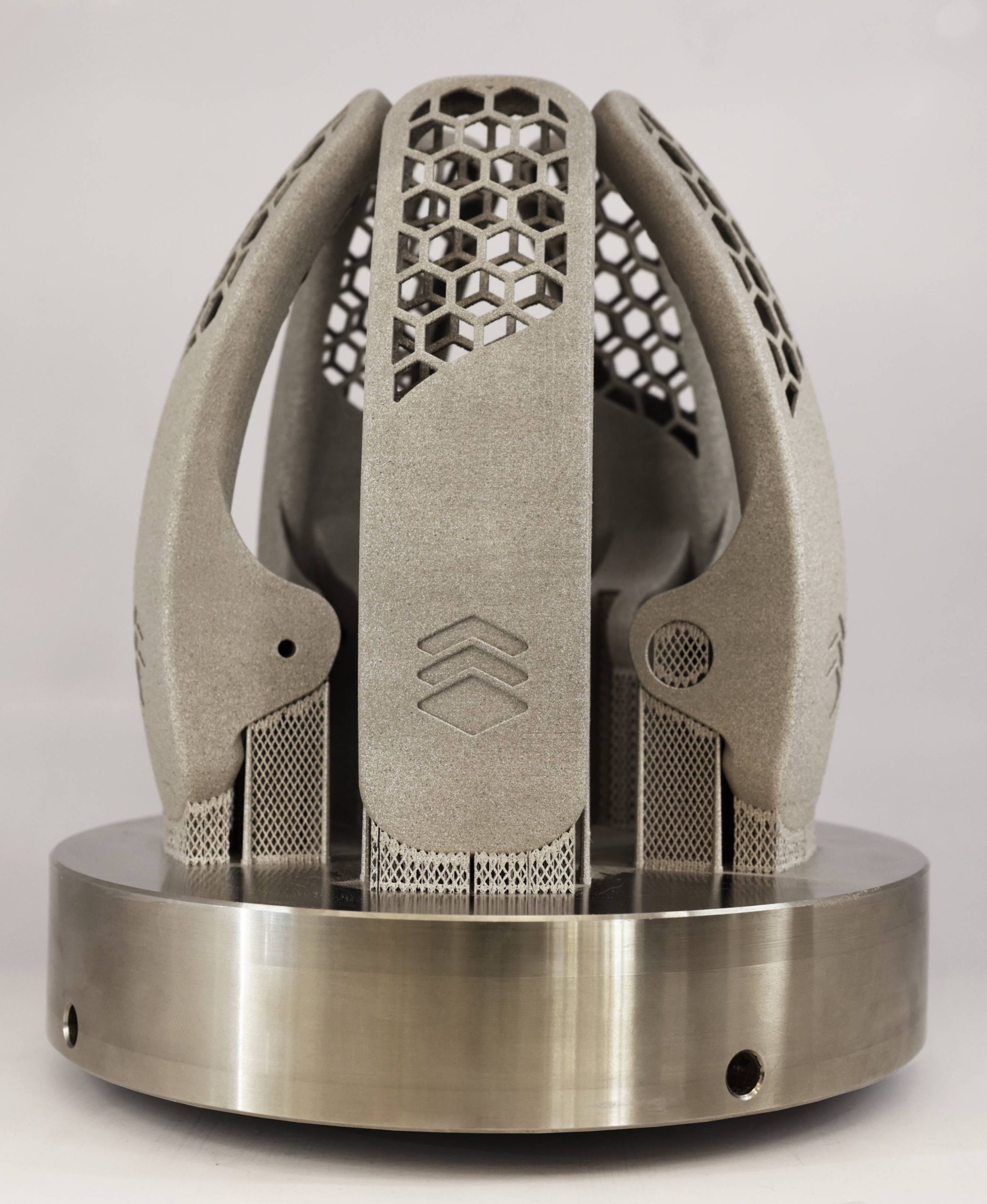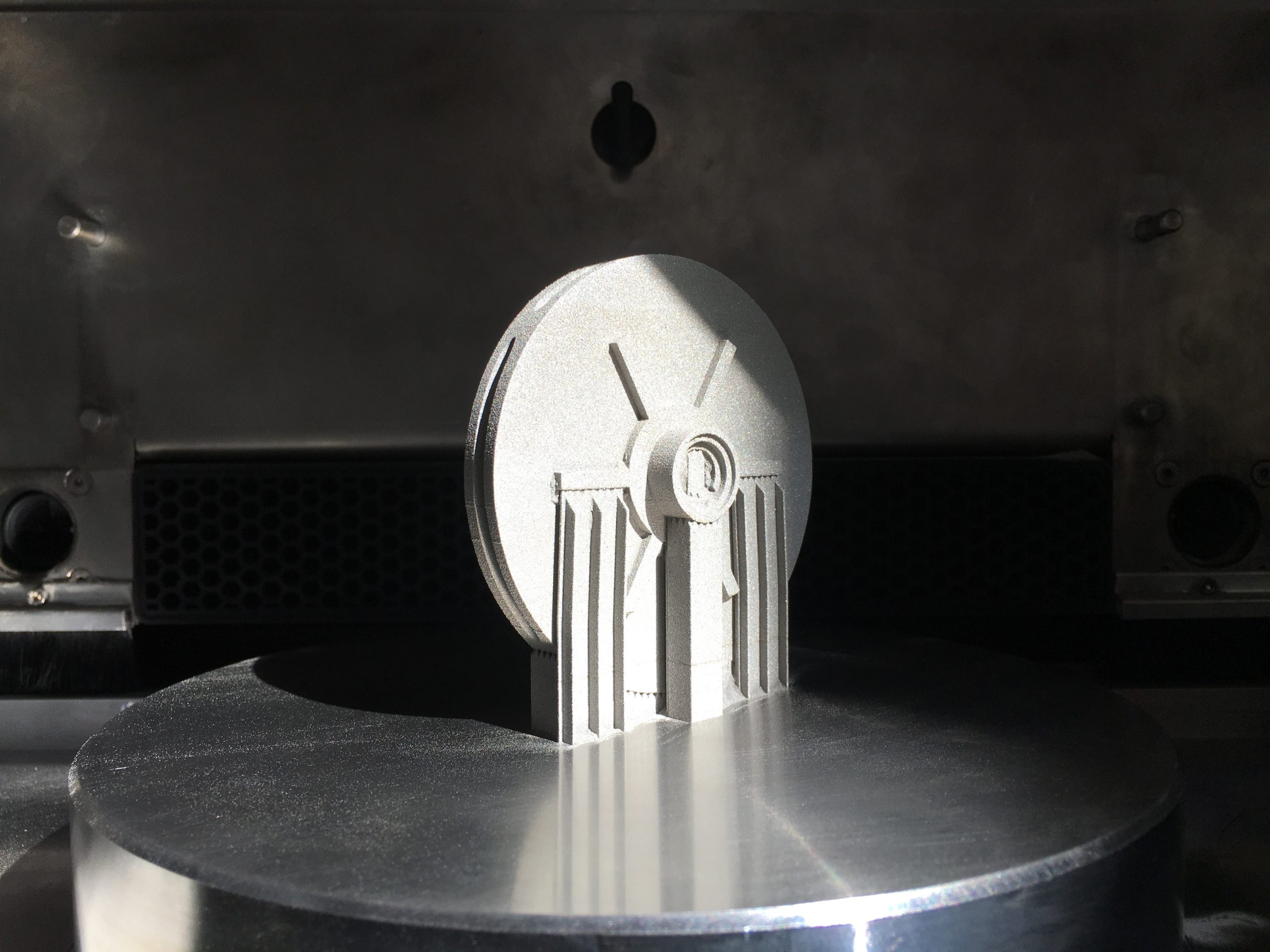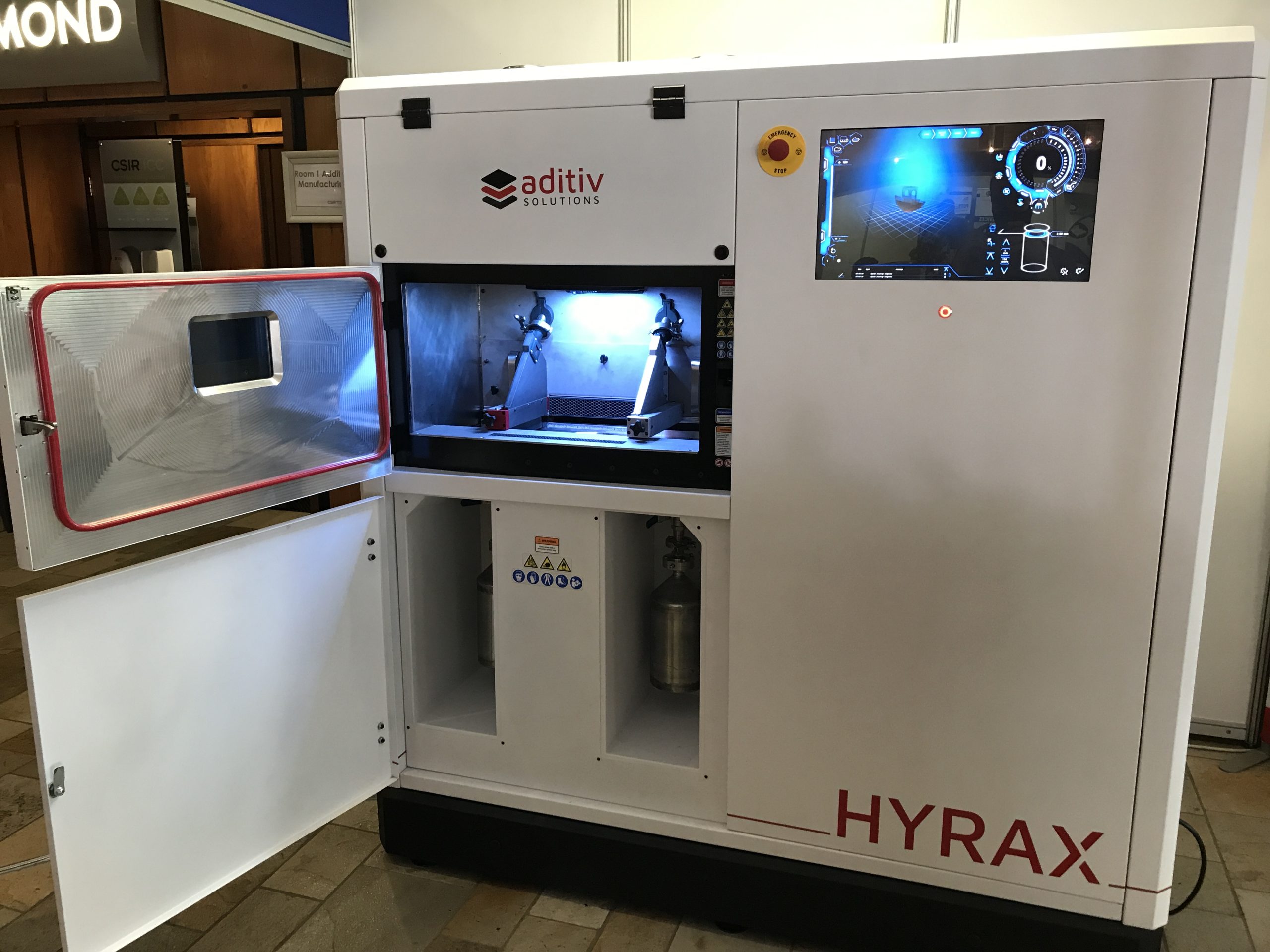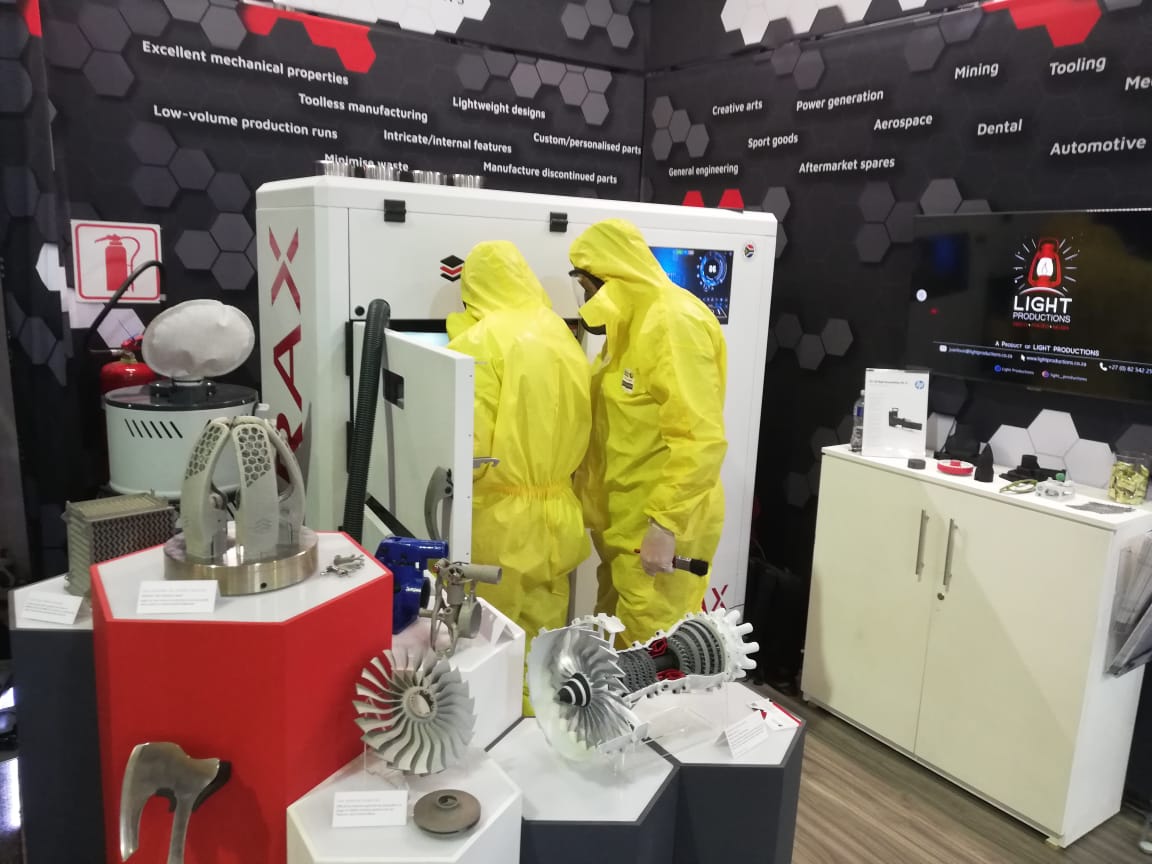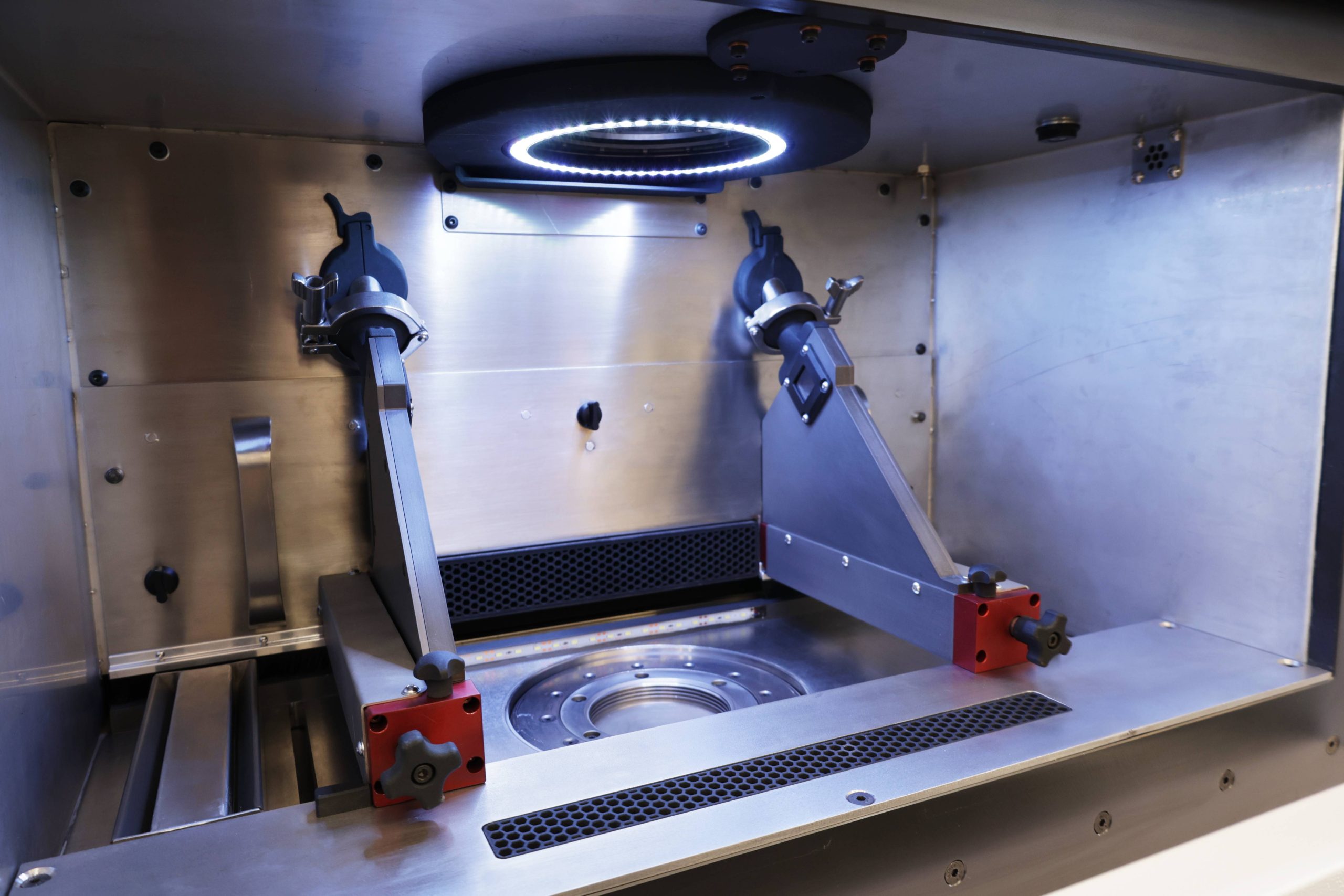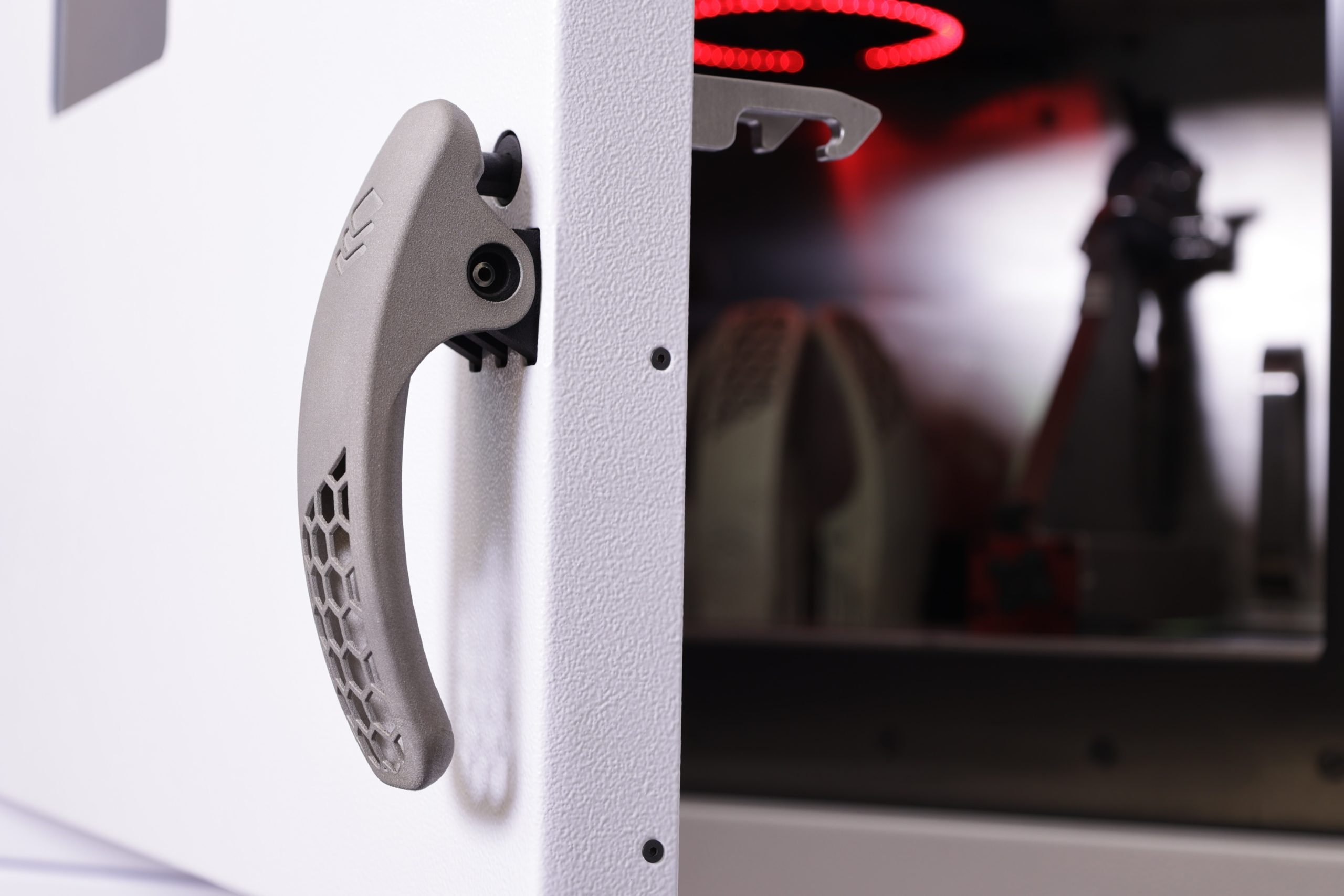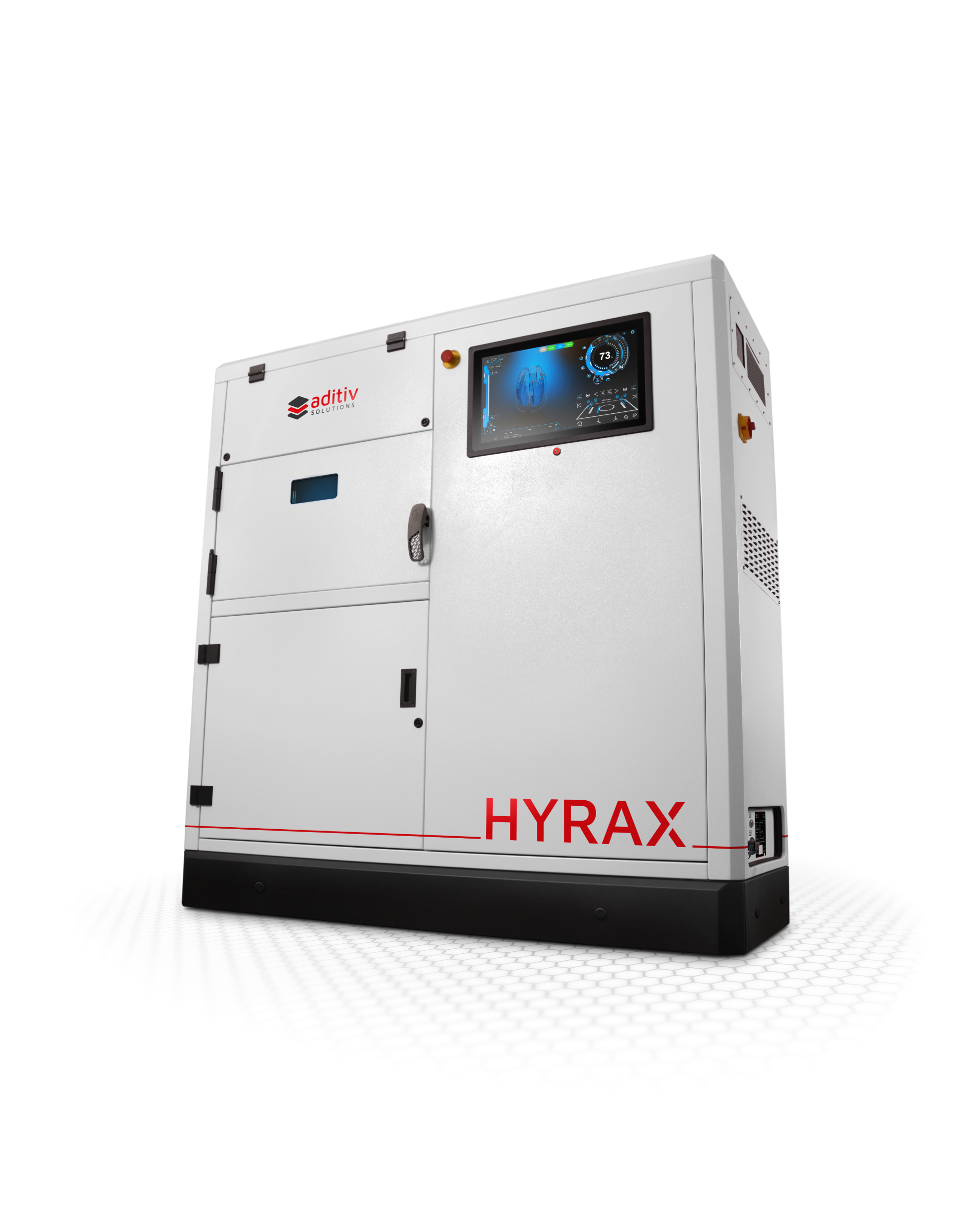
The HYRAX Metal 3D Printer
The HYRAX, exclusively designed and manufactured by Aditiv Solutions, is our flagship machine and one of the most cost-efficient machines on the market (big statement, we know…;)
It is equipped with best-in-class German optical systems and boasts a 400W laser. It is ideal for small to medium-sized parts and can print parts with a maximum diameter of 200mm and up to 300mm high.
The machine is a workhorse and can manufacture parts in Stainless Steel, Tool Steel, Nickel Alloys, Titanium, Aluminium, and Cobalt-Chrome, to name a few.
It is not only easy to operate, but it’s almost as simple to install and commission the machine as well. It can fit through a standard door and only requires single-phase power and an inert gas supply to run.
Check out the page below to see the many features of the HYRAX. What is the coolest feature you ask? The awesome and easy-to-use multi-touch interface, of course…
HYRAX Advantages
Efficiency
A high-power 400W laser, combined with a high-speed scanning system, and dual-direction recoating, ensures excellent production rates.
Ease of use
The machine has a multi-touch ergonomic and intuitive interface. Easy to change from one metal powder to another. Low maintenance costs.
Metal Production
The system allows for efficient manufacturing of parts from a wide range of metals such as Stainless Steel, Tool Steel, Nickel Alloys, Titanium, Aluminium, and Cobalt-Chrome, to name a few.
Resolution
A minimum layer thickness of 30μm (⅓ of a human hair) and a variable spot size ensure the best combination of resolution versus high production rates. Ideal for manufacturing fine details and intricate parts.
How does it work?
The HYRAX makes use of a process called Powder Bed Fusion (or PBF). The process is sometimes also referred to as Selective Laser Melting (SLM) or Direct Metal Laser Sintering (DMLS).
What this means is that we melt (weld) layers of metal powder together with a high-power laser. By using thin layers (⅓ of a human hair) we can produce accurate and intricate parts, directly from a 3D CAD model.

Need more info on how the Powder Bed Fusion process works?
Check out the video here to see the HYRAX in action.
Why would I use metal 3D printing?
Due to the layer-based manufacturing approach of the PBF process, complex geometries can be achieved. This provides engineers and designers more freedom to design parts which were traditionally difficult/costly to manufacture.
Our clients always surprise us with the new and innovative (seemingly unending) use-cases they find for 3D printing. Some of the more common advantages include:
- Complex geometries can be produced, which allows for light-weight designs. This is especially useful in industries where weight is critical such as the aerospace and electric vehicle industries.
- Many applications benefit from the ability to produce intricate parts with internal features. Use-cases include heat exchangers and parts that require internal cooling, such as injection mould tooling.
- 3D printed parts are near-net shaped parts, meaning that little to no machining is required. This greatly minimises material waste compared to many other manufacturing techniques.
- Unlike many other manufacturing techniques, 3D printing does not require tooling, which reduces lead time and costs for lower volume production runs.
- 3D printed parts are usually designed with increased functionality, since complexity (often) comes for free when using 3D printing.
- 3D printed designs commonly have fewer components than those produced by more traditional manufacturing methods. Part count reduction is a great way to reduce processing steps, inspection steps, tolerance build-up and cost over the long run.
- 3D printing also work well with some exotic materials that are normally difficult to manufacture such as Titanium and Inconel.
How can the Hyrax benefit me?
Powder Bed Fusion (PBF) lets you produce intricate parts directly from CAD, without the need for tooling. This changes the manufacturing landscape and creates new opportunities and business cases in various industries.
Do you need to produce parts on demand? Do you have small batch quantities? Do you need to customise your parts? Do you need replacement parts on-the-go? 3D printing may be the answer. You can change your production outputs daily without expensive tooling or long lead times.
Need to upscale your printing? No problem. Out software is designed to help you manage a fleet of printers. Imagine placing your printer on-site at your client and eliminate shipping completely…
Need to be more competitive? The running cost of the HYRAX is way lower than that of other 3D printers. Let us help you make your business even better.
3D printing may just change the way you run your production business.
Examples where 3D printing makes sense include:
- On-demand manufacturing
- Scaling production up and down with a fleet of machines
- Shorter value chains
- Reduced lead times
- Production of discontinued spare parts
- Cost-effective low-volume production runs
- Custom or personalised parts
Which materials can I use?
The Hyrax allows you to use a wide range of materials. Many commercially available metal powders can be used in the PBF process.
Most common materials:
- Stainless Steels
- Tool Steels
- Nickel Alloys
- Titanium
- Aluminium
- Cobalt-Chrome
How easy is metal 3D printing really?
How easy is it to print parts in metal you ask? Well, “You just press PRINT and voila!” is something we will NEVER tell you…
Like any other manufacturing process, 3D printing has design rules and limitations that needs to be understood.
We firmly believe that “not everything should be 3D printed”. We see 3D printing as just another tool in the manufacturer’s toolbox that should be understood and used in the right way. We also believe that 3D printing is an enormously powerful tool and, when used correctly, has serious potential to positively impact on your business.
Are you uncertain whether 3D printing is the right tool for your application? Feel free to reach out. Our team has extensive experience in this and we’d love to chat.
Production capability examples

Topology Optimised parts – when you’re serious about saving weight.
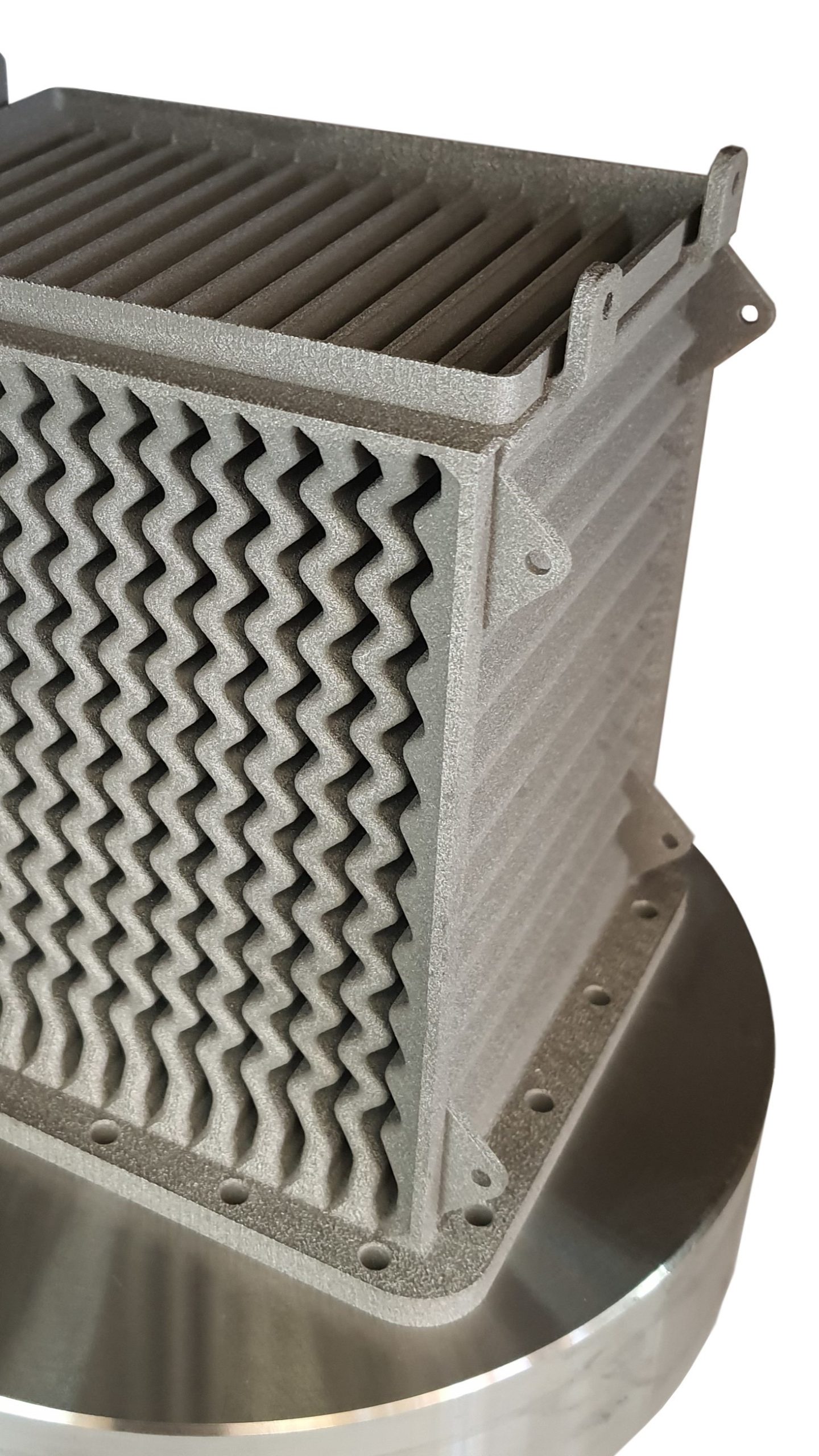
Combine previous “multi-part assemblies” into a single component and eliminate welding, bonding, bolting…
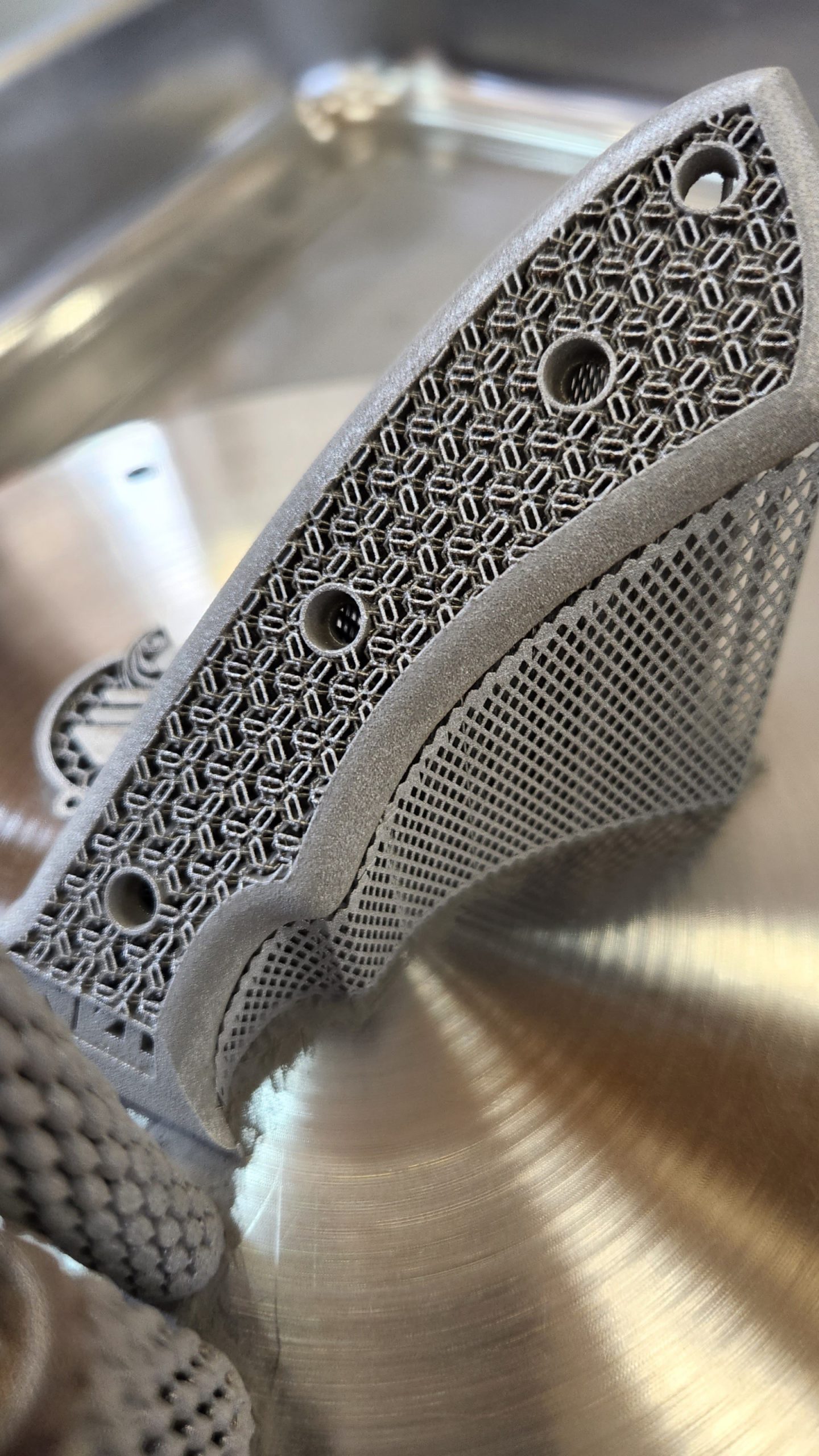
Produce complex details like no other process can.
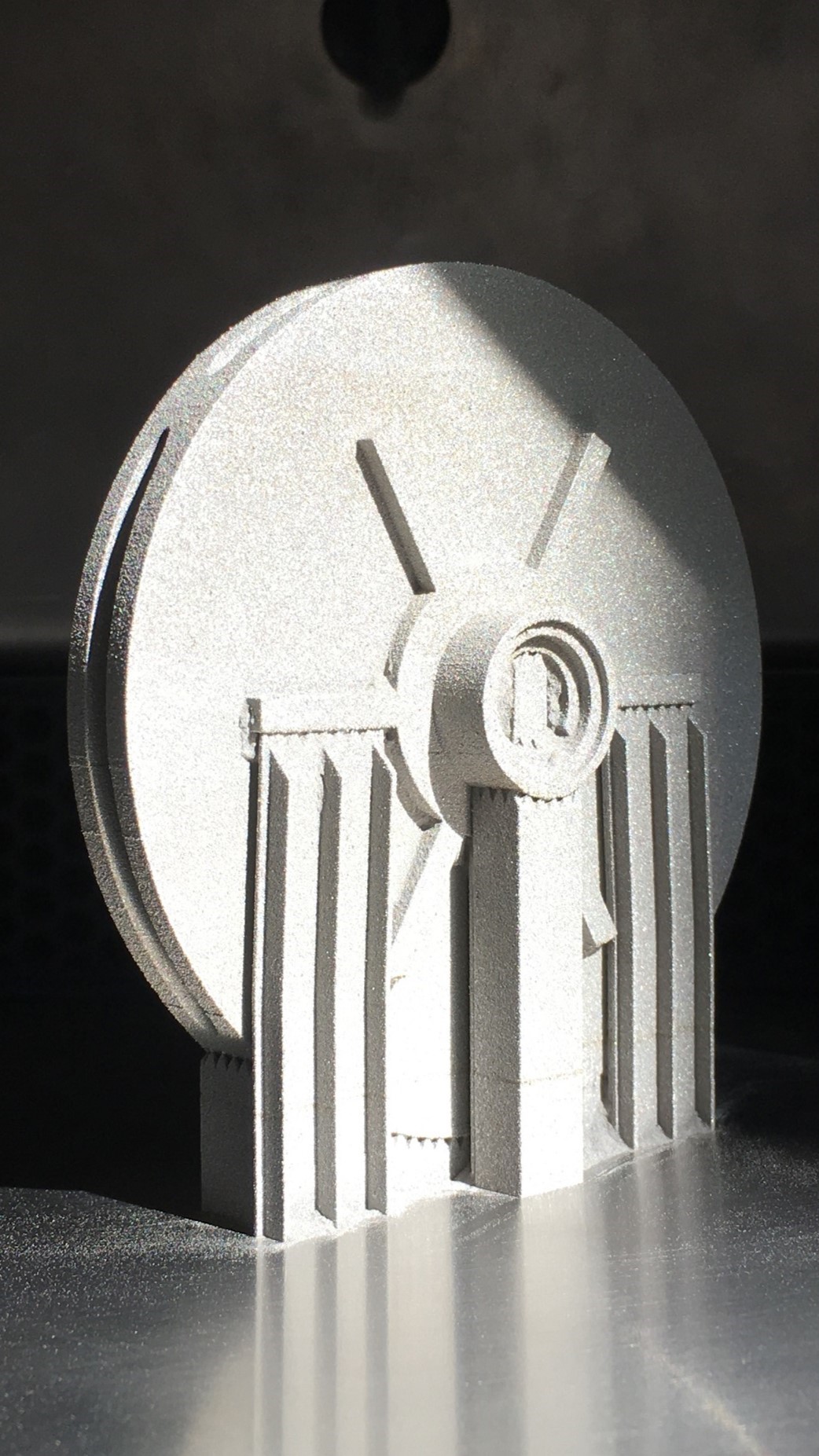
Internal features, such as channels and cavities, is possible – as long as you can get the powder out.
HYRAX Features
Optical Systems
- The HYRAX delivers high productivity at an excellent resolution.
- We use best-in-class German optical systems in our machines to ensure reliability and repeatability of your process for years to come.
- Our optical systems are basically maintenance-free and does not require additional cooling systems.
- We offer a single-mode laser with a variable spot size to accommodate a range of manufacturing requirements.
Machine Interface
- Our machines have the most intuitive, ergonomic and easy-to-use interface on the market (or at least, we think so!).
- Built-in process monitoring camera allows you to keep track of your build from anywhere.
- See and manipulate real-time 2D and 3D views of your print models.
- Continuous recording of all machine parameters and events for reporting and certification requirements.
Environmental Control
- High purity inert atmosphere with ppm level oxygen monitoring.
- Fast purging of the machine reduces overheads and print costs.
- Low gas consumption (Argon/Nitrogen).
- Continuous HEPA filtration of process.
- Laminar gas flow (and extraction) over the build area effectively removes metal vapour and ensures process repeatability.
Powder Handling
- Gravity-fed powder feeding system.
- Powder handling is easy and safe to do.
- Easy to change between different materials with cleaning made as easy as possible.
- Powder can be added in-situ without interrupting the build process.
- Powder sensors generate “low powder” warnings in time to allow new powder to be added if required.
Optimised Configuration
- Bi-directional powder scraping reduces the waiting time between layers and ensures faster build times (i.e. cheaper prints).
- Rapid build plate installation/removal (check our video to see the easy screw-in mechanism).
- The screw-in mechanisms mean you can utilise the full build plate (no fastening holes).
- Plug-and-play powder dosing units are easy to remove/install. Tip: order spare dosing units if you plan to print with different materials to reduce cleaning.
- An optional build reduction unit is available if you sometimes need to do a small print (with little powder). It is easy to install when changing between small and large build plates (great for R&D).
Open Architecture
- You have full access to all core process parameters (no additional cost).
- You can process any suitable metal 3D printing powder (no restrictions).
- Our software includes a parameter development module that allows you to print a matrix of samples with different parameters.
- Perfect for production and R&D applications.
HYRAX Interface
HYRAX Technical Specifications
Technology type:
Laser-based Powder Bed Fusion (PBF)
Build volume:
Ø200 mm x 300 mm (Ø7.874 in x 11.811 in)
Laser type:
Yb fibre laser (single mode)
Laser power:
400W
Optical system:
Post objective galvo scanner
Max scan speed:
11m/s *
Beam focus diameter:
90-500μm
Layer thickness:
>30μm
Min feature size:
170μm
Inert gas:
Argon/Nitrogen
Inert gas supply:
5-8bar
Inert gas consumption:
<0.2 l/min (in process) 20 l/min for +-20min (during purging)
Electrical supply:
200-240VAC, 50Hz/60Hz, Max 20A
Power consumption:
Max 2kW
Communications:
Ethernet, WiFi 802.11, USB
Software:
Aditiv build processor (incl. Process development toolkit)
Machine weight (Tare):
920 kg (2028 lb)
* Max positioning speed of the optical system. Actual scan speed is dependent on material type and processing parameters.
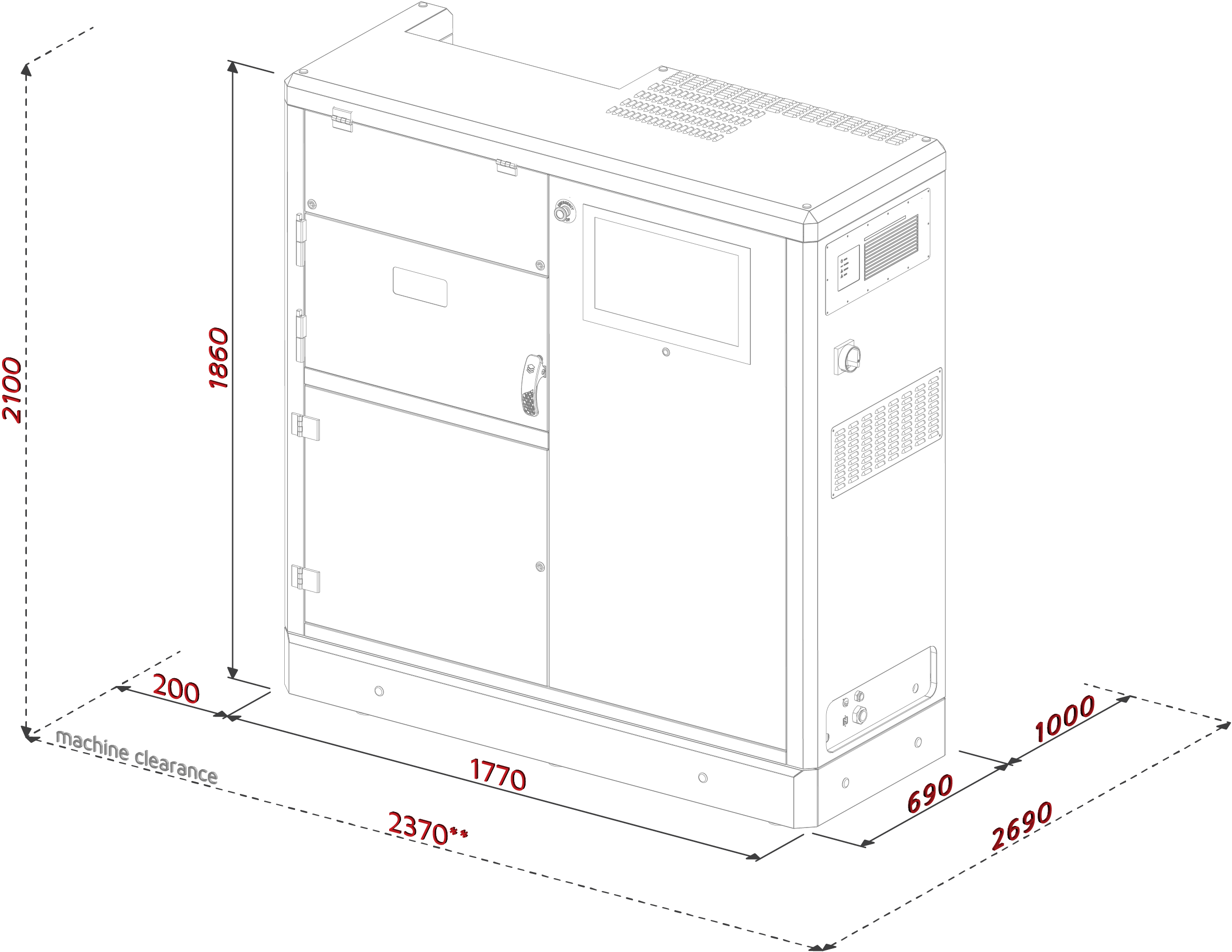
** All dimensions are in mm.
Picture Gallery

